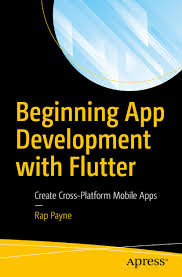In the ever-evolving landscape of mobile app development, Dart and Flutter have emerged as powerful tools for building high-performance, visually appealing, and cross-platform applications. This white paper delves into the key aspects of mobile app development using Dart and Flutter, exploring their benefits, challenges, and best practices.
Crafting a Comprehensive White Paper: Mobile Application Development with Dart and Flutter
Introduction
In the ever-evolving landscape of mobile app development, Dart and Flutter have emerged as powerful tools for building high-performance, visually appealing, and cross-platform applications. This white paper delves into the key aspects of mobile app development using Dart and Flutter, exploring their benefits, challenges, and best practices.
Understanding Dart and Flutter
- Dart: A modern programming language developed by Google, Dart offers a clean syntax, strong type system, and efficient performance. It's designed for building web, mobile, and server-side applications.
- Flutter: A UI toolkit built on top of Dart, Flutter enables developers to create native-quality apps for iOS, Android, web, and desktop platforms from a single codebase.
Benefits of Using Dart and Flutter
- Cross-Platform Development: Build apps for multiple platforms (iOS, Android, web, desktop) with a single codebase, reducing development time and effort.
- Hot Reload: Quickly see changes to your app's UI as you code, accelerating development cycles.
- Expressive UI: Create beautiful and customizable UI designs with Flutter's rich set of widgets.
- Native Performance: Flutter compiles to native code, ensuring high performance and smooth user experiences.
- Large and Growing Community: Benefit from a supportive community, extensive documentation, and a wealth of third-party packages.
Key Features of Flutter
- Widget-Based Architecture: Build UI components using a hierarchical structure of widgets.
- Reactive Programming: Use reactive programming principles to manage state and UI updates efficiently.
- Platform-Specific Customization: Tailor your app's appearance and behavior to specific platforms.
- Built-in Performance Tools: Profile and optimize your app's performance.
- State Management Solutions: Use tools like Provider, Riverpod, or BLoC to manage state effectively.
Best Practices for Dart and Flutter Development
- Clean Code: Write well-structured, maintainable, and readable code.
- Effective State Management: Choose a suitable state management solution to manage complex state interactions.
- Optimize Performance: Profile your app to identify and address performance bottlenecks.
- Test Thoroughly: Write unit, widget, and integration tests to ensure code quality.
- Stay Updated: Keep up with the latest Flutter releases and best practices.
- Leverage the Community: Engage with the Flutter community to learn from others and share knowledge.
Challenges and Considerations
- Steep Learning Curve: Flutter and Dart have a unique learning curve, especially for developers new to reactive programming and UI development.
- Large App Size: Flutter apps can be larger than native apps due to the inclusion of the Dart runtime.
- Platform-Specific Issues: While Flutter aims to provide a consistent experience, platform-specific nuances may require additional effort.
Conclusion
Dart and Flutter have revolutionized mobile app development by providing a powerful and efficient solution for building high-quality, cross-platform apps. By following best practices and leveraging the strengths of the framework, developers can create exceptional user experiences that delight users and drive business success.
References
- Books:
- Flutter in Action by Eric Windmill
- Flutter Apprentice by Ray Wenderlich
- Websites:
- Flutter Official Documentation: https://dart.dev/
- Medium: (Numerous articles and tutorials on Flutter and Dart)
- Research Papers:
- Google Research Papers on Flutter and Dart: Search Google Scholar for specific papers on Flutter's performance, features, and use cases.
Additional Tips
- Consider Third-Party Libraries: Leverage a variety of third-party libraries to accelerate development and add functionality to your app.
- Stay Updated with the Latest Trends: Keep up with the latest trends in mobile app development, including emerging technologies like machine learning and augmented reality.
- Continuous Learning: Regularly explore new features, best practices, and community resources to improve your Flutter skills.
By following these guidelines and staying up-to-date with the latest advancements in the Flutter ecosystem, you can create innovative and engaging mobile applications that meet the needs of your users. Contact keencomputer.com
Additional References:
1.0 Murach’s Android Programming (2nd Edition)
2.0 Beginning App Development with Flutter: Create Cross-Platform Mobile Apps
